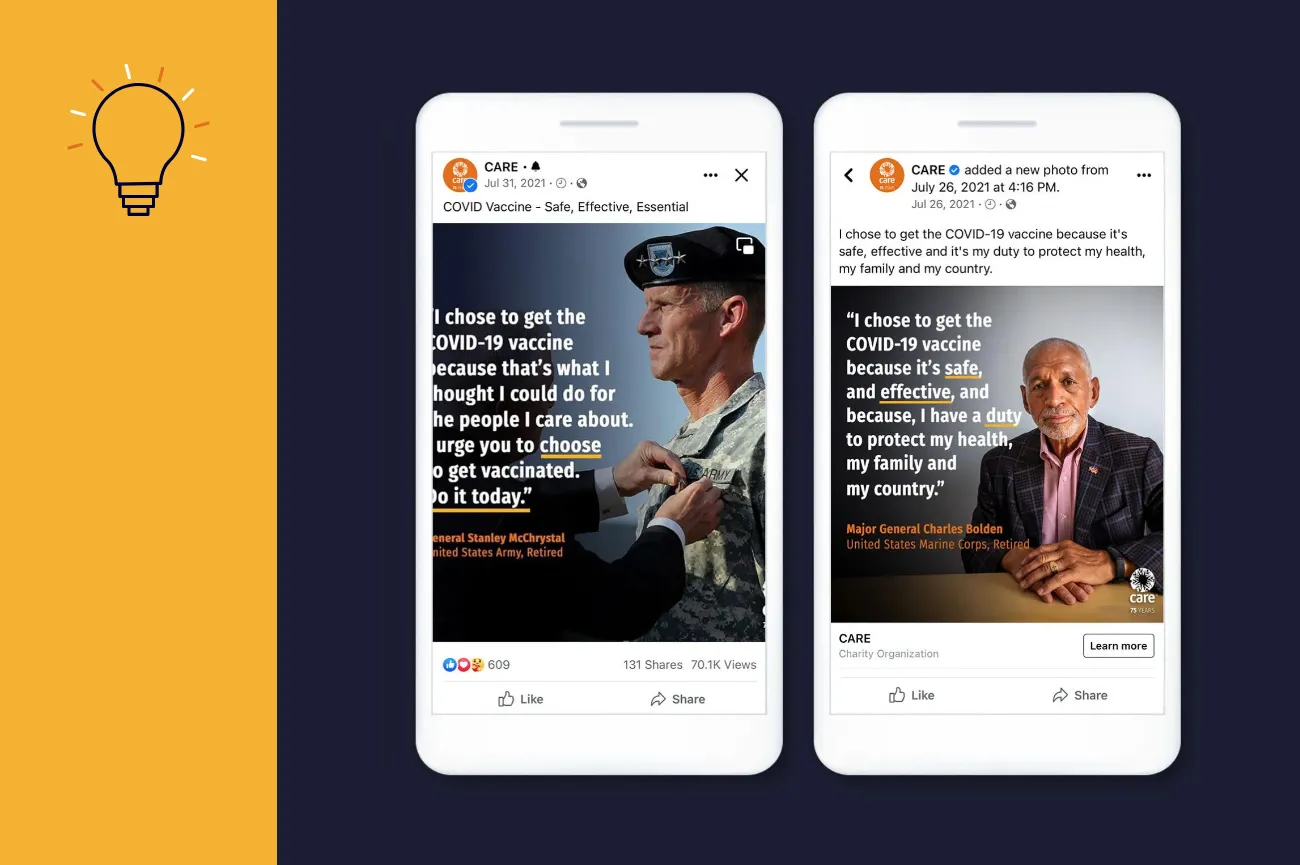
First, while measuring success of online campaigns is difficult, we know that to be true of analog modalities as well. Experimenting with SBCC online creates opportunities to innovate, test, measure, and evaluate methods that may better correlate online and offline programming and make social and behavior change work more cost effective and efficient.
Experimentation with online SBCC affords NGOs the opportunity to deepen and strengthen their organizational capacity and capability around social and behavior change communication. Often, the skill sets needed to execute digital campaigns sit with the communications staff, while social and behavior change expertise lies with program staff members. One can’t help but imagine the potential of strengthening ties between communications and programs teams. What might be possible when previously siloed teams work together?
SBCC in social media creates opportunities to build on lessons learned in the sector so far in service of additional program areas. Could we shift knowledge, attitude, and behavior related to welcoming refugees or accepting and understanding people different from ourselves?
This field of study also creates opportunities to catalyze new funding and investment to support social and behavior change outcomes through digital communications.
At the same time, this work helps build the organizational brand. Nonprofits are typically unable to raise brand building funds. This work drives programmatic impact and builds your brand at the same time. What if increased alignment between our communications and programs teams meant we could raise funds for communications designed to change people’s attitudes, knowledge, and behaviors for impact outcomes? Could this also serve as a way nonprofits might earn investment in brand building?
Finally, CARE worked in partnership with staff on the ground in 46 countries around the world. These teams were committed, smart, engaged, talented – and making this work happen on a small budget. Imagine what might be possible if we were to expand resources available to country office staff for effective, local creative content development and digital experimentation and transformation.
While CARE learned a lot, there are questions that still challenge us. We’re excited to keep exploring and testing to better understand what levers best drive impact in knowledge, attitude, and behavior changes across a variety of topics.
CARE hopes you’ve found this playbook helpful as you consider experimenting with social media as a tool for social and behavior change communication.
Read about CARE’s most memorable campaigns and what made each of them so unique.
Read chapter 5In late 2020, Meta approached CARE USA with an intriguing question: What if social media could drive social and behavior change for positive public health outcomes?
Read the introdution